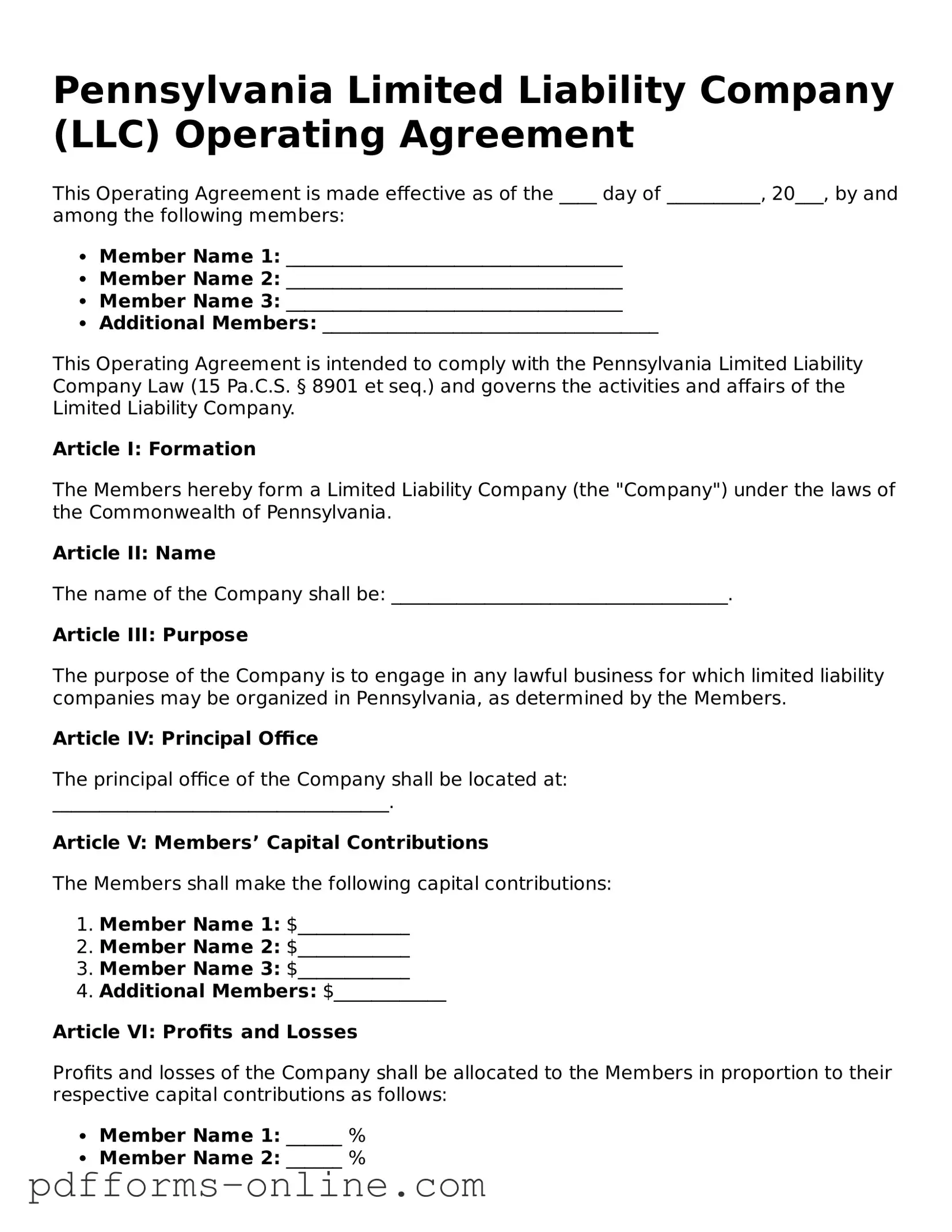The Pennsylvania Operating Agreement form shares similarities with the LLC Membership Agreement. Both documents outline the rights and responsibilities of members within a limited liability company. They serve as foundational documents that govern the internal operations of the LLC. While the Operating Agreement focuses on the management structure and operational procedures, the Membership Agreement emphasizes the relationship between members, detailing aspects such as ownership percentages, voting rights, and profit distribution. This ensures clarity and minimizes disputes among members.
Another document akin to the Pennsylvania Operating Agreement is the Partnership Agreement. This agreement is used by partnerships to define the roles, responsibilities, and profit-sharing arrangements among partners. Like the Operating Agreement, it establishes the framework for decision-making and conflict resolution. However, the Partnership Agreement is tailored to partnerships, which can include different types of business structures, while the Operating Agreement is specific to LLCs.
The Corporate Bylaws document is also comparable to the Pennsylvania Operating Agreement. Corporate Bylaws govern the operations of a corporation, outlining the roles of directors and officers, meeting procedures, and shareholder rights. While the Operating Agreement addresses LLC-specific issues, both documents aim to create a structured environment for governance and management, ensuring that all parties understand their rights and obligations.
The Shareholders' Agreement is another document that shares characteristics with the Pennsylvania Operating Agreement. This agreement is utilized by corporations to outline the rights and responsibilities of shareholders. Similar to the Operating Agreement, it addresses issues such as voting rights, share transfer restrictions, and procedures for resolving disputes. Both documents are essential for maintaining order and clarity within their respective business structures.
The Joint Venture Agreement also resembles the Pennsylvania Operating Agreement in its purpose of outlining the terms of collaboration between two or more parties. This agreement specifies the contributions, responsibilities, and profit-sharing arrangements of each party involved in the joint venture. While the Operating Agreement focuses on a single LLC, the Joint Venture Agreement is designed for temporary partnerships formed for specific projects or objectives.
The Employment Agreement bears similarity to the Pennsylvania Operating Agreement in that it outlines the terms of employment between an employer and an employee. Both documents define roles, responsibilities, and expectations, although the Employment Agreement is more focused on individual roles within a company. It may include provisions related to compensation, benefits, and termination, ensuring that both parties are clear on their commitments.
When dealing with immigration processes, the USCIS I-134 form, commonly known as the Affidavit of Support, is crucial as it ensures financial support for foreign visitors, preventing them from becoming a public charge. For more detailed guidance on this form, you can refer to OnlineLawDocs.com.
The Non-Disclosure Agreement (NDA) can also be compared to the Pennsylvania Operating Agreement. An NDA protects confidential information shared between parties, ensuring that sensitive business information remains private. While the Operating Agreement governs the internal workings of an LLC, an NDA is crucial for safeguarding proprietary information, especially when members or employees have access to trade secrets or sensitive data.
Lastly, the Business Plan shares some common elements with the Pennsylvania Operating Agreement. A Business Plan outlines the vision, mission, and operational strategy of a business. While the Operating Agreement focuses on governance and member relations, both documents are essential for establishing a clear direction for the business. They help ensure that all stakeholders understand the goals and operational framework, contributing to the overall success of the organization.
